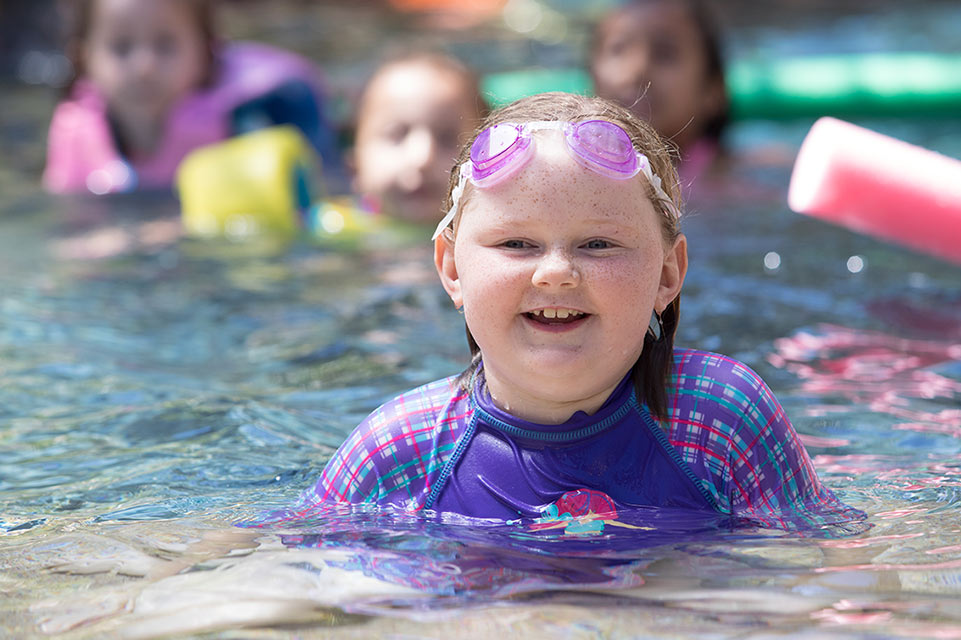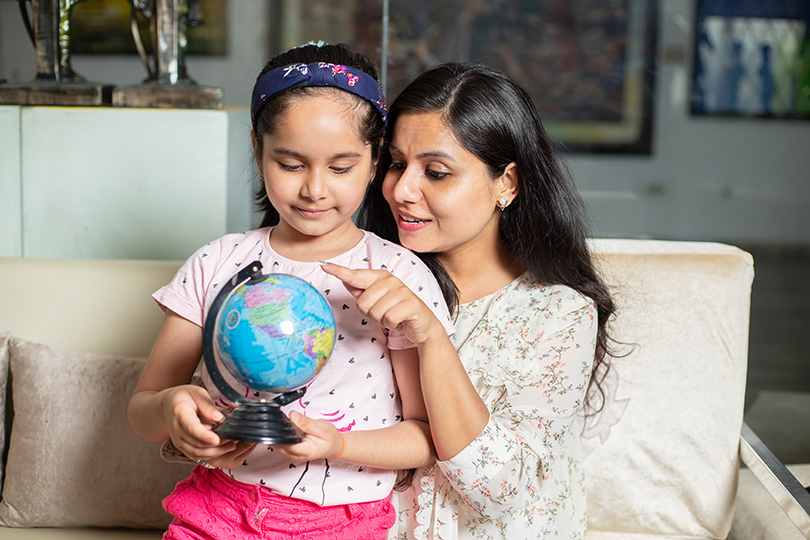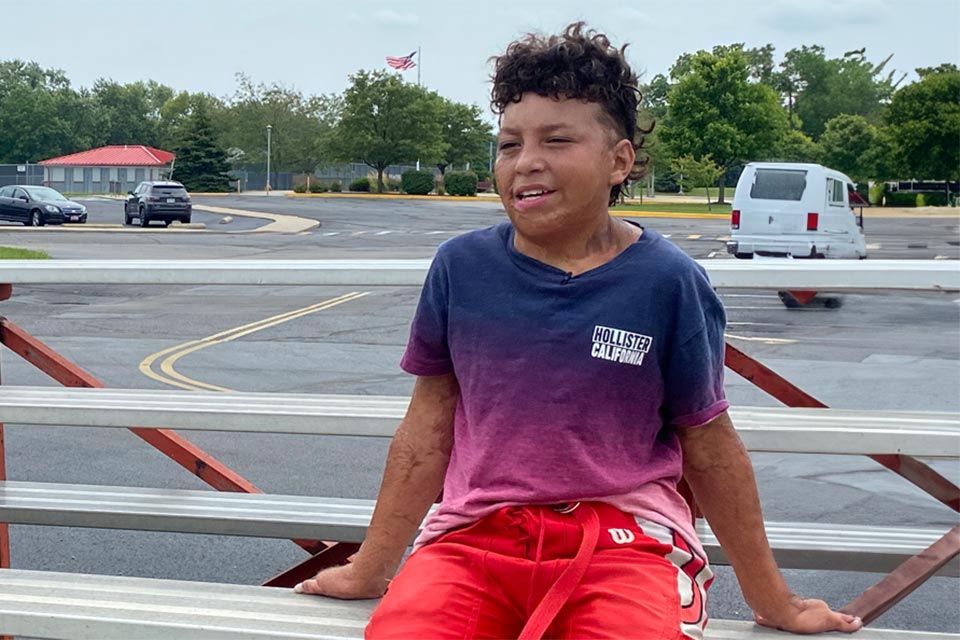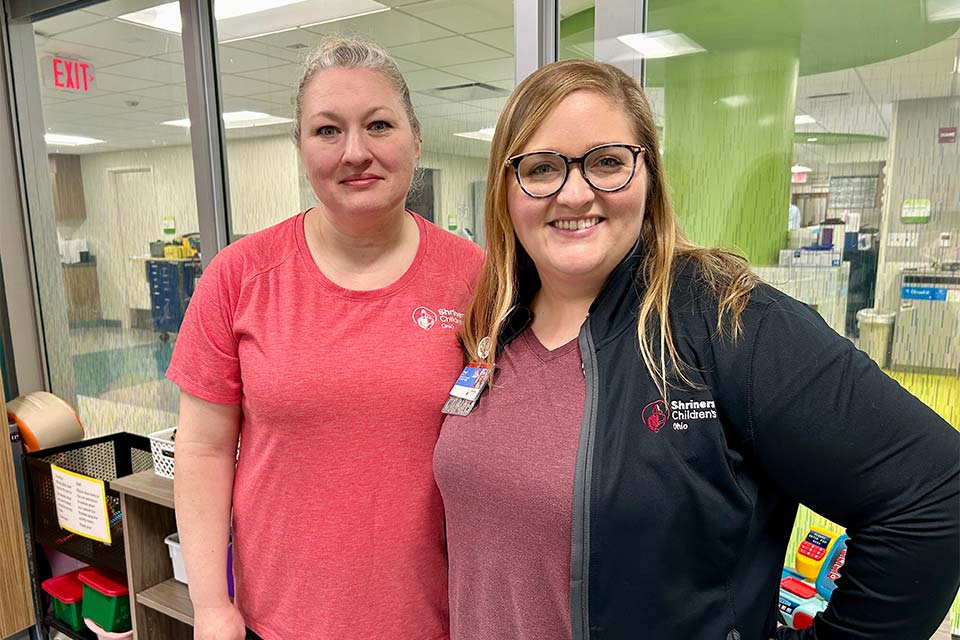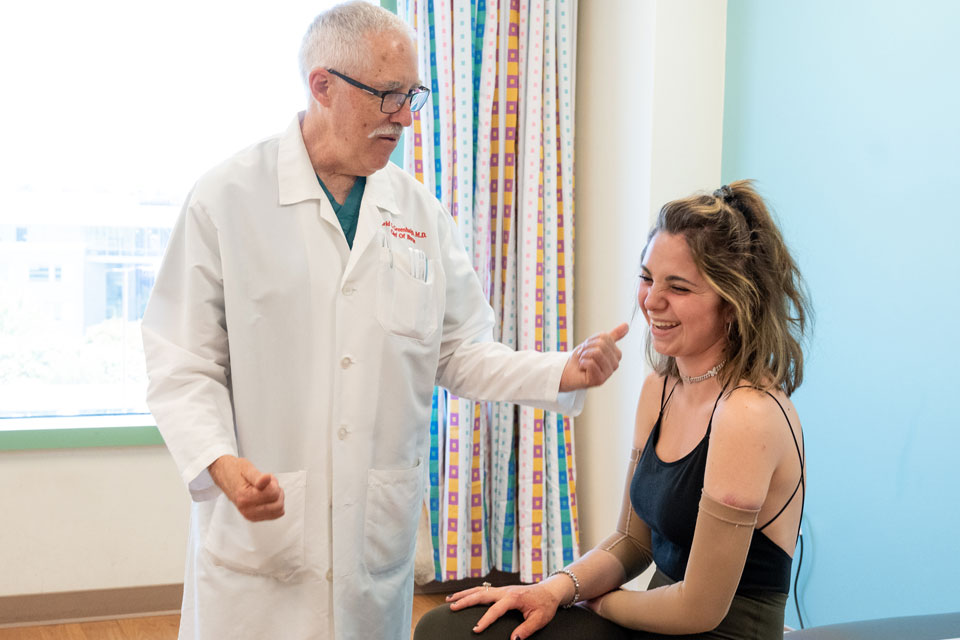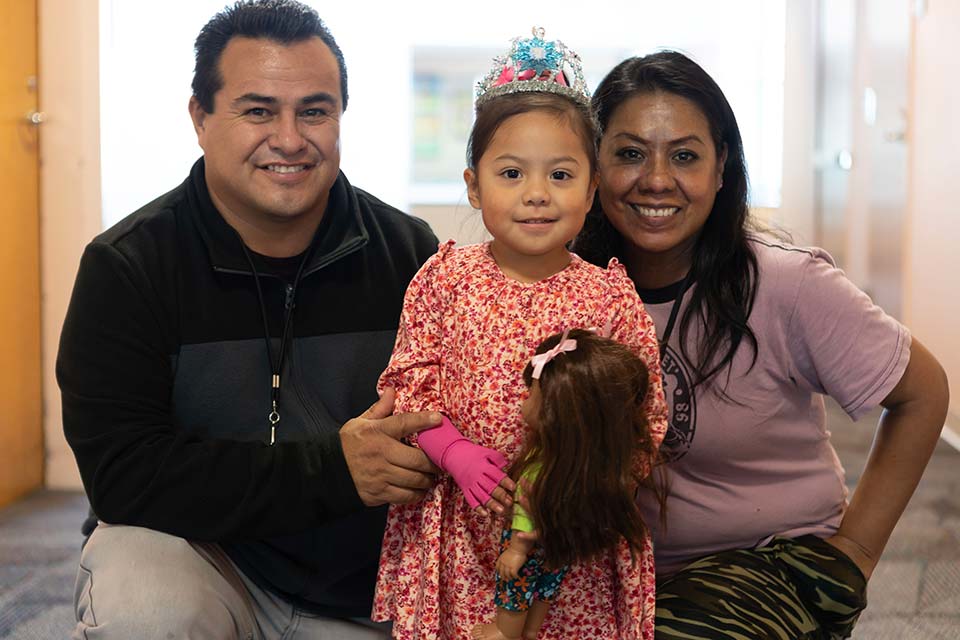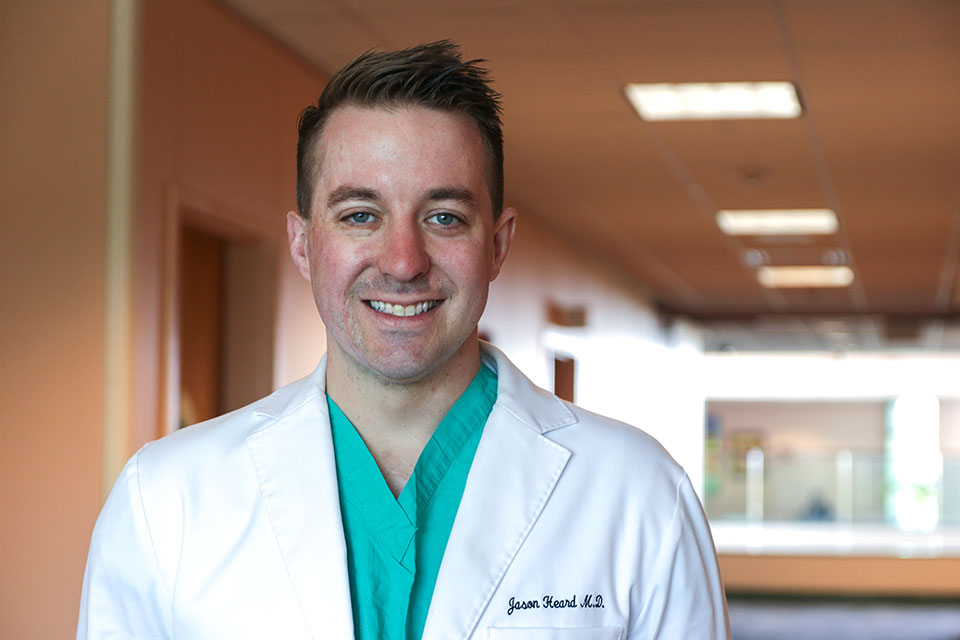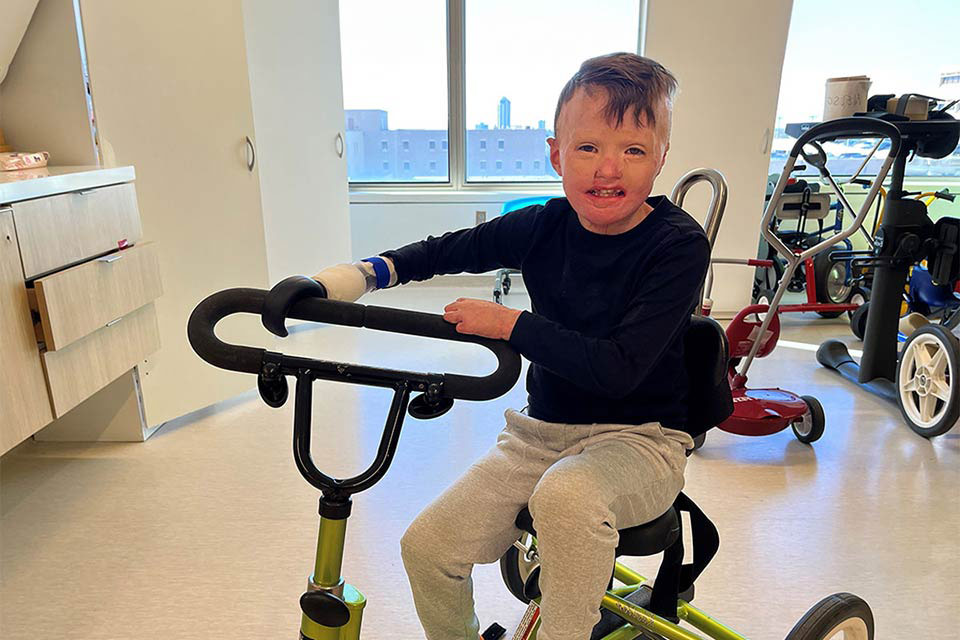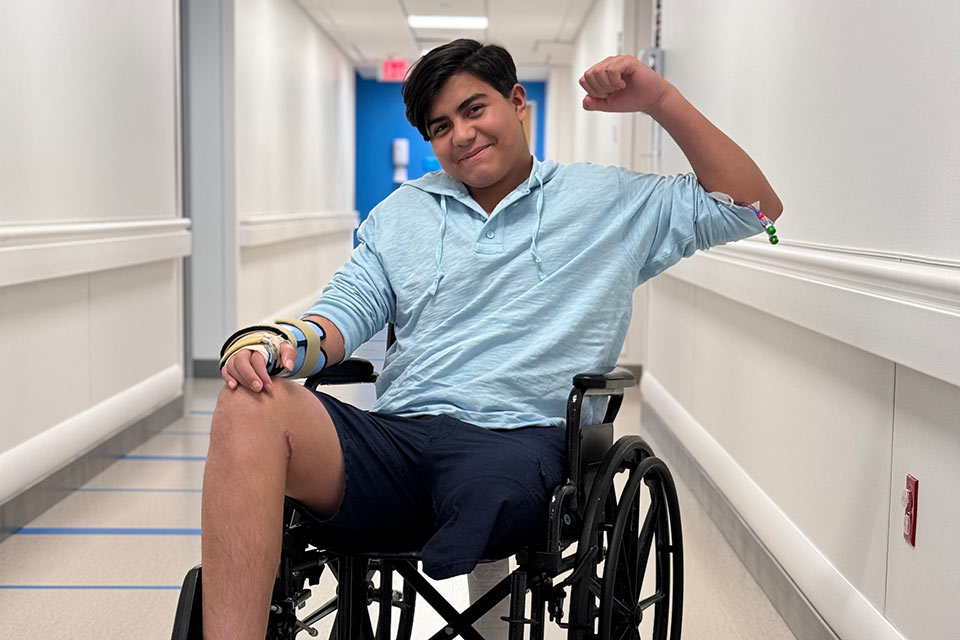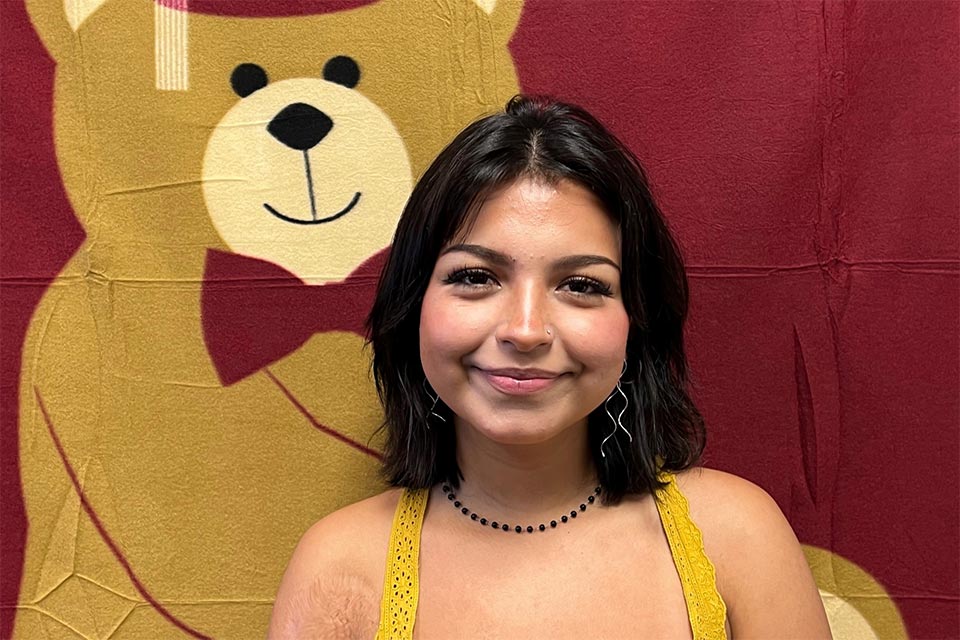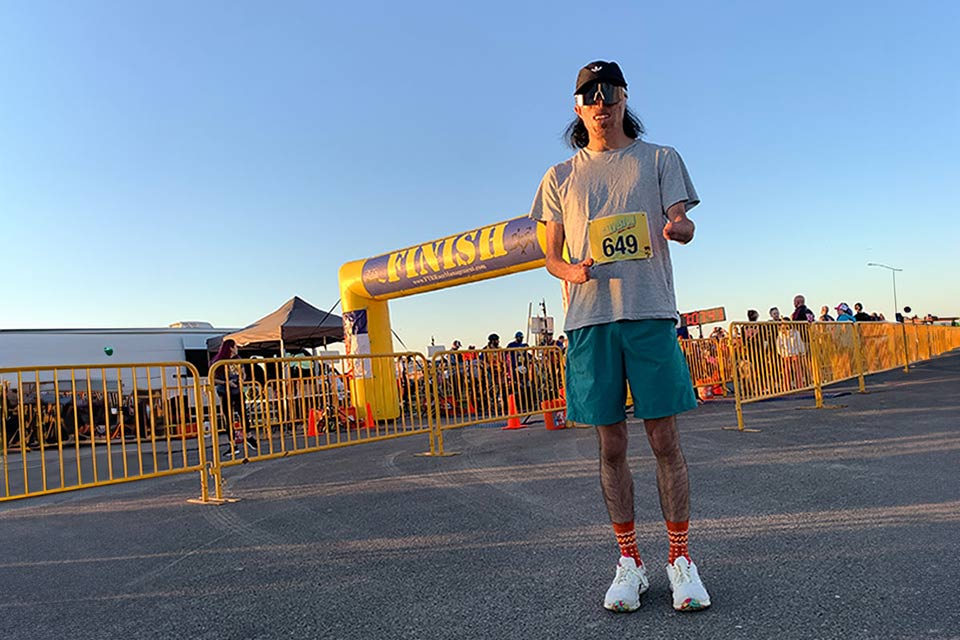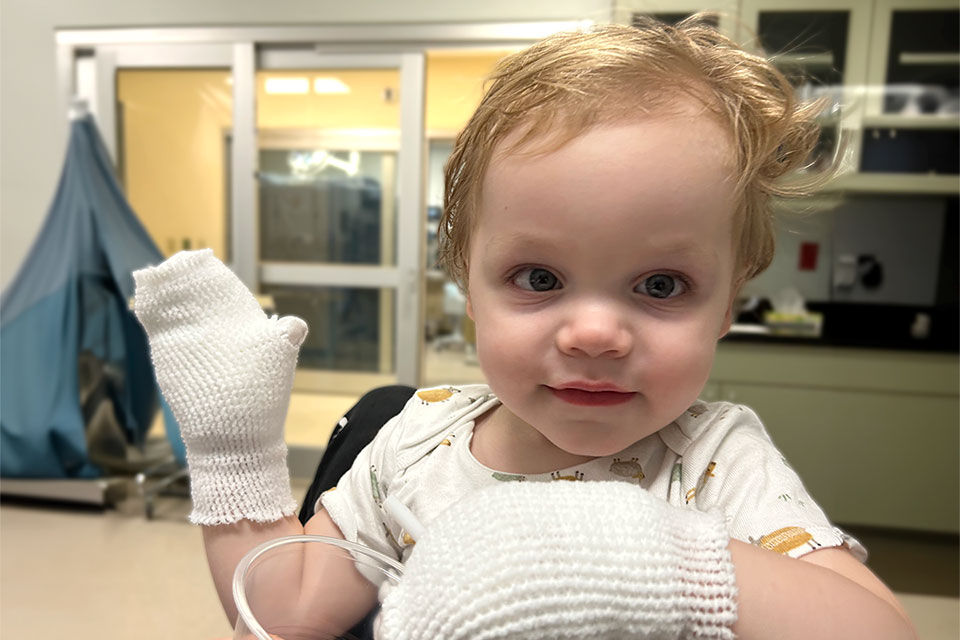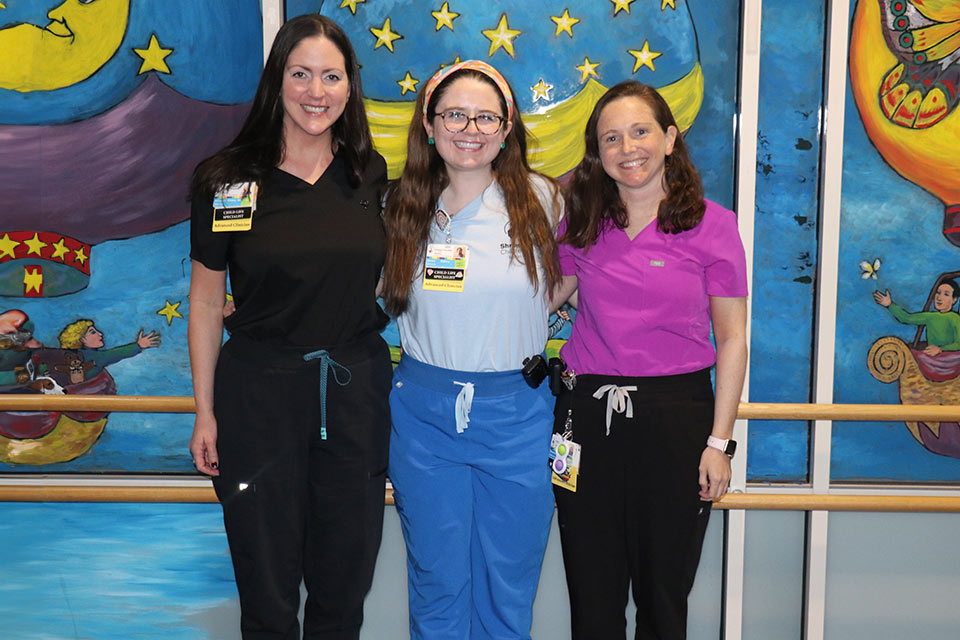Burn Care
Pediatric burn injuries can be hard on the entire family. While not all burns are life-threatening, they all involve stress and a scared child and require care that is personalized to that child and their family.
Shriners Children’s treats all levels and types of burns, including chemical burns, electrical burns and flame burns.
We’re known around the world for our innovative, caring approach to treating burns in children. Regardless of the type of burn your child has experienced, our burn care staff is driven to provide the following for each child we see:
- The physical and emotional support they need to heal
- The ability to function as they did before they were burned
- The healing that minimizes scarring
- The plan to get them back to their daily life with minimal disruptions
Our physicians and care teams have contributed to most of the significant advancements in acute and reconstructive burn care since we began treating burns in the 1960s. They draw on their own pioneering work when they treat a child for a burn, which can include wound care, scar management and reconstructive surgeries. We’ve set many of the standards for pediatric burn care.
Shriners Children's Burn Care Accreditation
Three Shriners Children's locations providing burn care are accredited by the American Burn Association (ABA) and the American College of Surgeons (ACS) as verified pediatric burn centers.
We have a strong connection to and history with the ABA. All of the Shriners Children's burn care chiefs of staff at the above locations have been presidents of the ABA. These distinctions display the depth of the burn care support services we provide, as well as the vast amounts of research we lead on behalf of our patients and children around the world who’ve been burned.
Shriners Children’s Comprehensive Treatment of Burns in Children
Your child’s Shriners Children’s burn care team might include skilled acute burn and trauma surgeons, reconstructive plastic surgeons, anesthesiologists, nurses and nurse practitioners. The wraparound support we provide means you’ll find all the services you and your child need in one location, including occupational and physical therapy, psychological services, nutrition, social services, child life, orthotics and prosthetics, school support and even a makeup clinic. In most cases, everything you need can be done without leaving the facility.
Treating Skin Conditions Similar to Burns
We incorporate many of the same burn care standards and treatments for pediatric skin conditions that have characteristics and symptoms similar to burns. That includes Stevens-Johnson syndrome, toxic epidermal necrolysis (TEN), necrotizing fasciitis and purpura fulminans.
Pediatric burn care and skin-related support services at Shriners Children’s are innovative, backed by research and designed to support a child and their family throughout their healing journey. From their initial diagnosis through treatment and rehabilitation, we meet your child's physical, emotional and psychological needs. We continue to follow our patients as they get older, to address any needs as they might come up.
Bringing Your Child to Shriners Children's for Burn Care Treatment
There are several different ways children come to Shriners Children's for burn care treatment. If your child is at another hospital, we can partner with that hospital to transfer your child to a Shriners Children’s location that provides burn care. In non-emergency cases, you can contact us to make an appointment with one of our pediatric burn care specialists. No matter how you come to us, our staff members are available to consult with your child's doctor on their specific situation.
Read below to learn more about our pediatric burn care services and the leaders behind our treatment
Specific treatments and services may vary by location. Please contact a specific location for more information.

It was always very comforting to Ayden that the same nurses, therapists, and child life staff would be there for him, consistently, at every visit. He learned to trust them, and they helped him overcome his fears of treatment.
If Your Child Has Been Burned
If your child is experiencing a burn emergency, please call 911. Burn emergencies include the following:
- A large, burned area
- A burn from a fire, an electrical wire or socket, or chemicals
- A burn on the child’s face, hands, feet, joints or groin
- A child who seems disoriented after being burned
The burn is healing but appears infected. Signs of infection include swelling, pus, or increasing redness or red streaking of the skin near the burn area.
After a burn, do the following:
- Immediately remove the child from the heat source.
- Remove any clothing from the area that’s been burned. Don’t attempt to remove clothing or anything else stuck to their skin.
- Run cool water over the burn to help decrease the pain.
- Apply a gauze bandage or place a clean, soft cloth or towel over the burn.
- Don’t apply any ointments, butter, sprays or other treatments to the burned area. They can actually make it worse.
- Don’t wrap the burn tightly; instead cover it loosely.
- If you see blisters in the burned area, don't break them.
- Don't put ice on a burn.
- If your child is alert, you may want to give them ibuprofen or acetaminophen for the pain.
-
Bring your child to the nearest ER/Urgent Care for evaluation.
Most importantly, don’t panic. You child may be scared, and you probably are too. If you can remain calm, it’ll help your child be calm.
Types of Burns
Superficial Burns
Superficial burns, also known as first-degree burns, affect only the epidermal (outer) layer of skin. No blisters form, but the burned areas are painful. Burns of this type usually heal in a few days without scarring.
Superficial Second-degree Burns
Superficial, partial thickness burns affect the top two layers of skin and these burns often form blisters. Beneath the blister, the wounds are pink, moist and are typically painful. Superficial second-degree burns generally heal in 10 to 14 days with mild to moderate scarring.
Deep Second-degree Burns
Deep, partial thickness burns go further into the skin and involve the epidermal and deeper dermal layers of the skin. Deep second-degree burns can have a significant risk of infection and take longer to heal, often around three weeks. Scarring for these wounds can be severe.
Full Third-degree Burns
Full thickness burns, or third-degree burns, go through the epidermal and dermal layers of the skin and into the underlying tissue. These burns often appear dry and leathery and result in very severe scarring.
Fourth-degree Burns
The most severe and potentially life-threatening burn is a fourth-degree burn. Fourth-degree burns are the highest degree of burn. They affect all layers of the skin, muscles, tendons and even bone.
Understanding Your Child’s Burn Care Appointments
Start by gathering any medical records and documents and anything else that could be important for our healthcare team to better understand what happened. This can include:
- A list of your child’s current medications
- Your child’s primary care and referring physicians' names, addresses, and phone and fax numbers
- Clothing that will allow the care team to look closely at your child’s burn
Your Child’s First Burn Care Appointment
To create the right treatment plan for your child’s burn injury, we’ll explore the burn in detail, while asking you and your child questions to better understand how it happened and what’s been done since then. Our specialists may need to touch the burn and take measurements; they know how to be extremely gentle and safe when they interact with a child who’s been burned.
The Follow-Up
Children are not “little adults.” The care plan we develop is customized to meet your child’s specific needs, taking into account their age and development. Any follow-up appointments for treatment, which could include wound care, scar management and inpatient or outpatient rehabilitation – physical, occupational and speech therapy, psychological support, etc. – are included in that plan. We may need to adjust your child's treatment plan as they begin to heal, physically and emotionally.
Learn About Burn Treatment Options
Your child’s comprehensive, individualized treatment may require a plan to treat existing scars and prevent the formation of new ones. Your care team may discuss some of the following options with you.
Surgical Reconstruction
Surgical reconstruction can help a child’s ability to function and/or improve the appearance of an area that’s been burned. Our physicians will determine the appropriate surgical option for your child based on the type and severity of the burn, carefully assessing your child to determine the right path.
Common Surgical Options for Treating Burns in Children
- Reconstructive surgery
- Skin grafting
- Tissue expanders
- Tissue transfers or flaps
- Laser treatment
Custom Pediatric Burn Care Compression Garments
Compression therapy can significantly flatten scars and improve their appearance. Each custom garment is tailored to the child to apply the right amount of pressure. Custom garments are generally recommended for burns that required a skin graft or will take longer than 20 days to heal. If custom garments aren't necessary, we may recommend home treatments like massaging a wound, skin graft or scar, which can help soften and flatten scar tissue.
Occupational and/or Physical Therapy
Physical therapy or occupational therapy can help a burn heal when it impacts a child's ability to perform daily tasks or do the things they enjoy, whether that's running with their friends, holding a book or sitting cross-legged on the floor.
Shriners Children’s Pediatric Burn Care Specialists
Our pediatric burn care teams include some of the world's finest pediatric burn care specialists, most of whom have been treating children for decades. Many of our burn care specialists have been honored for their outstanding work in pediatric burn care.
These individuals happily share their knowledge to improve burn care around the world. This includes training hundreds of emerging physicians through on-site fellowships, participation in burn summits, conferences, academic lectures and authoring numerous publications and textbooks on pediatric burn care. In fact, the premier textbooks on pediatric burn care were authored by specialists from Shriners Children’s.
Some of the principal pioneers and innovators in the pediatric burn care field who work in our burn care centers include:
Steven E. Wolf, M.D., chief of staff at Shriners Children’s Texas, immediate past-president of the American Burn Association (ABA) and editor-in-chief of Burns, the Journal of the International Society for Burn Injuries
David Greenhalgh, M.D., chief of burns at Shriners Children’s Northern California, past-president of the ABA, president-elect of the International Society for Burn Injuries, and editor-in-chief of Burns Open
Tina Palmieri, M.D., FACS, FCCM, assistant chief of burns at Shriners Children’s Northern California, another past-president of the ABA and current member of the American College of Surgeons Trauma, Burns and Critical Care Board
Rob Sheridan, M.D., chief of staff of Shriners Children’s Boston, past-president of the ABA, professor of surgery at the Harvard Medical School and a fellow of the American College of Surgeons and American Association for the Surgery of Trauma
The Latest Burn Care Research from Shriners Children's
Survival rates for people with burn injuries have improved dramatically in the past 50 years. Shriners Children’s physicians and researchers are primarily responsible for many of the advances in pediatric burn care that are now the standard of care worldwide, and we continue to lead the community in pediatric burn care research.
Current pediatric burn care research at Shriners Children’s includes:
- Advances in critical care and metabolic management in severely burned children
- Development and use of skin substitutes in wound management and scar mitigation
- Pioneering techniques in burn scar reconstruction including laser scar resurfacing
- Research into PTSD and the emotional effects of injury in children
- Rehabilitation of children with burns
David Greenhalgh, M.D., and his team are known worldwide for their advances in resuscitation from severe burns, the appropriate use of blood products, and innovative techniques in wound closure.
Steven Wolf, M.D., and his team are equally well-known for their work in recovery from injury using nutrition, rehabilitation, and pharmacologic means (i.e., the uses, effects and modes of action of drugs) to re-establish muscle mass and function.
Rob Sheridan, M.D., and his team are world-leaders in the development and use of skin substitutes and techniques for scar reconstruction, and importantly for their pioneering work in measuring and achieving better holistic outcomes in children with burns, revolutionizing the approach to recovery from severe injuries in children around the world who have been burned.
Shriners Children’s Cares for Burns Around the World
Shriners Children’s is an international burn care referral center. We see children from all over the globe and have medical teams ready to assist when disasters and emergencies occur. We have a strong history of providing medical care for children across the globe and responding quickly to tragedies involving children wherever and whenever they occur.
Burn Prevention
The Shriners Children’s burn care teams often work with local organizations to promote health and safety through fire prevention education and research. Topics of prevention studies include halogen lamps, fire imagery in toy advertising, microwavable soups, circle of safety, scald burns and residential sprinklers. Some of our locations also conduct burn prevention programs for school children.
Here are some ways you can prevent a child from being burned:
- Keep children away from open flames
- Be careful when using candles, space heaters, hair dryers, etc.
- Keep hot drinks out of their reach
- Check the temperature of the bath water before putting a child in the bathtub
- Don’t let young children play in the kitchen while someone is cooking and never leave them unattended by a stove that’s hot
- Keep a working fire extinguisher in your kitchen and be sure to check your smoke alarm batteries at least once a month. (If you don’t have a smoke alarm, contact your local fire department for assistance.)
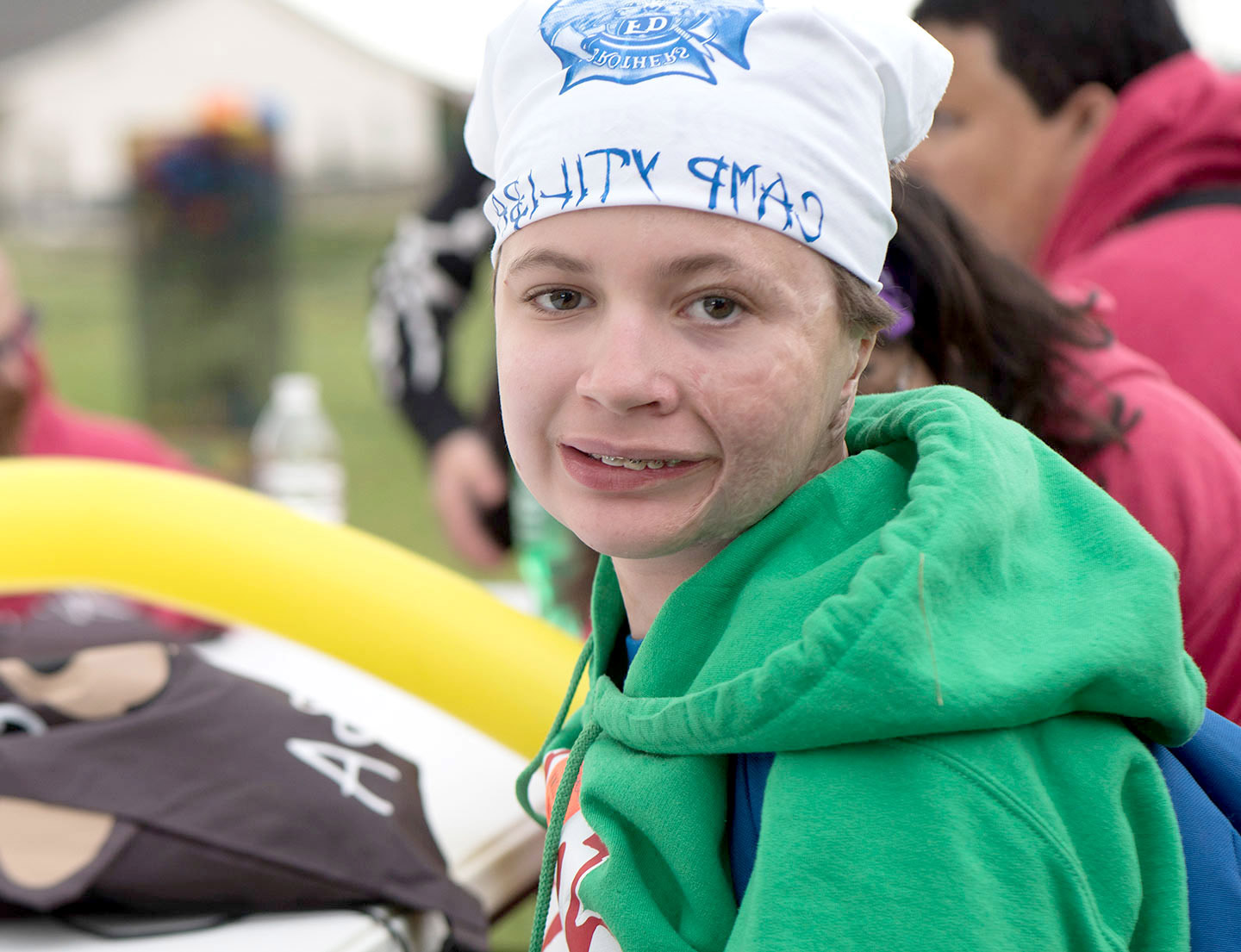
Child Life Services
Conditions We Treat
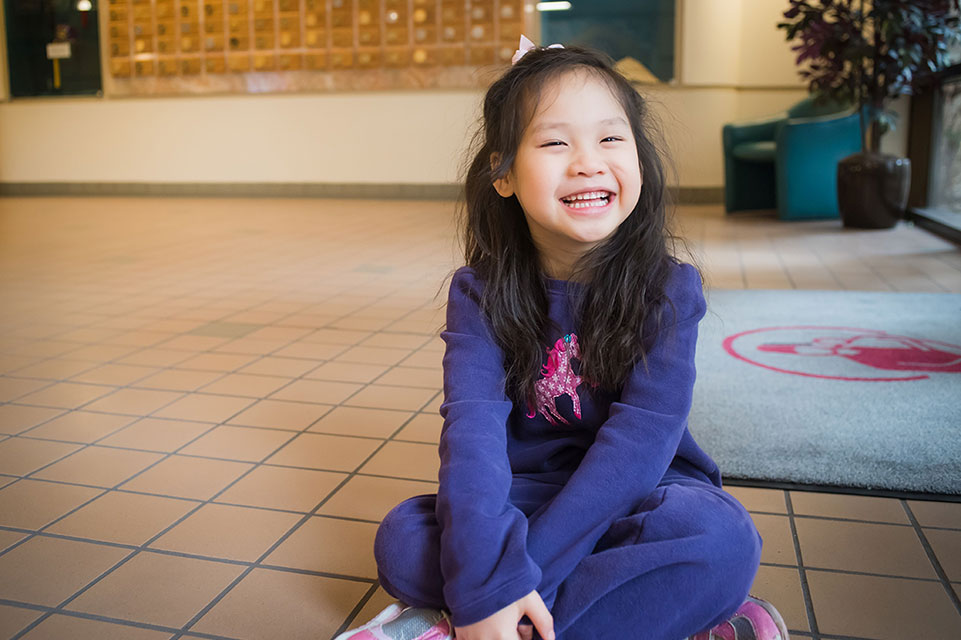
Flame Burn
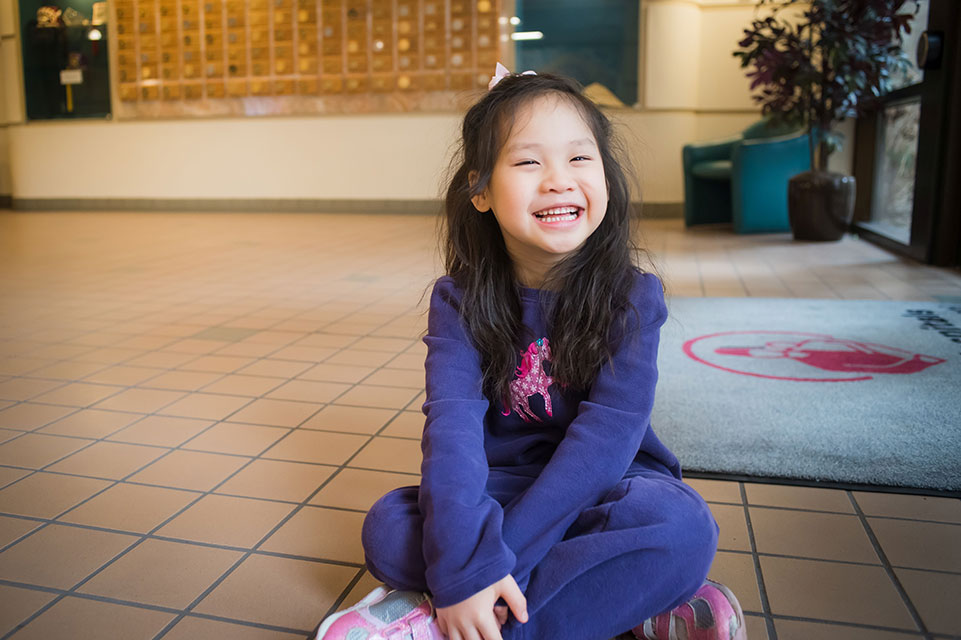
Contact Burns
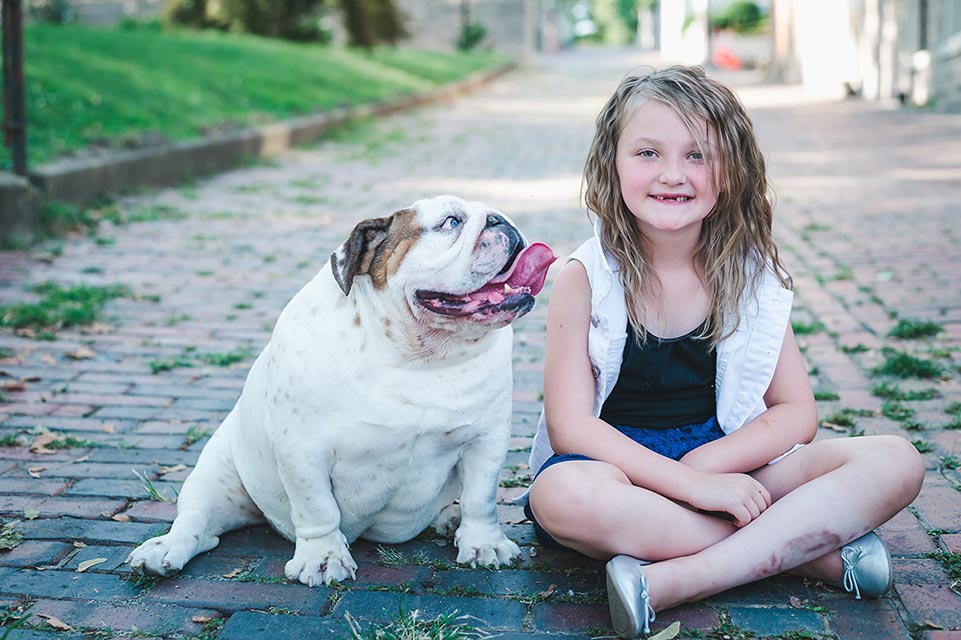
Chemical Burns
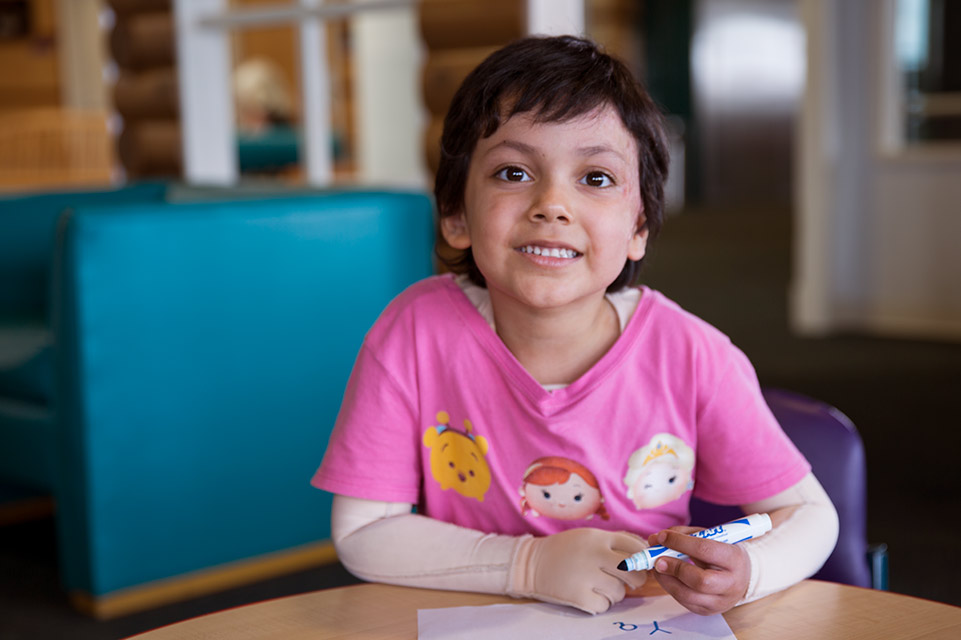
Electrical Burns
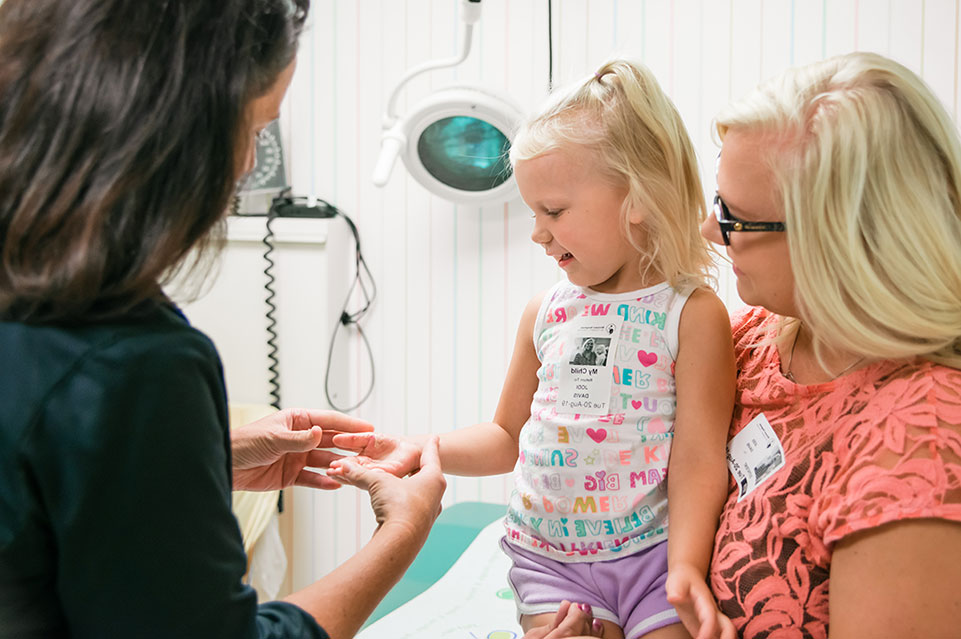
Radiation Burns
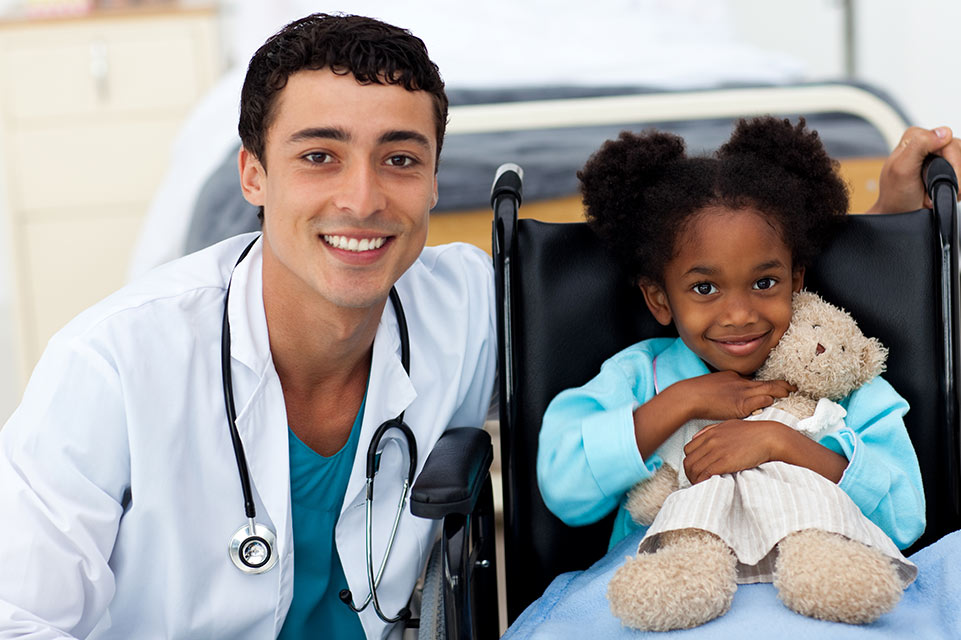
Sunburns
